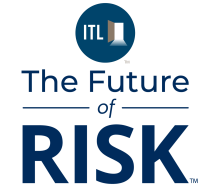When people talk about AI in insurance, they usually imagine global giants, shiny dashboards, and Silicon Valley pilot programs. But the reality is far broader—and in some ways, more grounded. Even in emerging markets like Ukraine, artificial intelligence is becoming a silent partner in day-to-day decision-making, risk management, and claims processing.
From Curiosity to Daily Tool: Where We Use AI
I wouldn't call myself an AI veteran, but over the past year, these tools have become a quiet backbone in my work. I use them to analyze market trends, structure internal reports, and systematize competitive data that used to take hours to compile. In short, AI is like having an analyst who never sleeps and never needs a coffee break. (Though if it learns to bring coffee, I'm in trouble.)
Beyond personal use, we're gradually integrating AI into our operational workflows. Some real examples from inside our company:
- Automated underwriting that speeds up policy issuance and improves consistency.
- Remote claims adjustment using computer vision tools to assess damage from user-submitted photos.
- Medical AI integration in health insurance products to provide early diagnostics and smarter pricing models.
Where AI Shines in Insurance (and Where It Still Struggles)
The areas where AI truly adds value are well known:
- Underwriting based on historical and behavioral data
- Fast-track claims resolution
- Actuarial calculations at scale
- Fraud detection through pattern recognition
But the challenge isn't always in the algorithm—it's in the environment. In Ukraine, we lack clear regulation on AI, so companies are hesitant to fully automate sensitive decisions. There are also concerns about customer trust and data ethics. Without clear legal frameworks, some executives prefer to play it safe.
That said, this cautious phase is normal. We've seen it before with online banking. It started slowly—and now no one can imagine life without it.
People First: Culture Matters More Than Code
One of the biggest misconceptions is that AI will replace people. In practice, it empowers them. But that message needs constant reinforcement.
In our company, we've started internal workshops to help teams understand how AI supports—not replaces—their work. Once employees see how tools help them save time or reduce routine, resistance melts away.
Still, change management is essential. Some team members fear the unknown, others are simply overwhelmed by "yet another tool." That's why leadership has to be transparent and patient and lead by example.
East vs. West: What's Different—and What's Not
Compared with Western markets, Ukraine is behind in AI penetration—but not in ambition. While U.S. and E.U. insurers boast automated five-second claims approvals, we're still scaling those capabilities. But the bright side? We get to learn from others and leapfrog past failed models.
In some ways, being late to the party is a strategic advantage.
Final Thought: Start Small, Think Bold
AI is not a threat. It's a lever. A multiplier. An amplifier of human capability. It helps us do what we do—only faster and more intelligently.
My message to industry colleagues: Don't wait for the perfect regulation or the perfect tool. Start where you are. Use what you have. Explore. Adapt. And most of all—bring your teams along for the journey.
The future isn't about man versus machine. It's about partnership.








